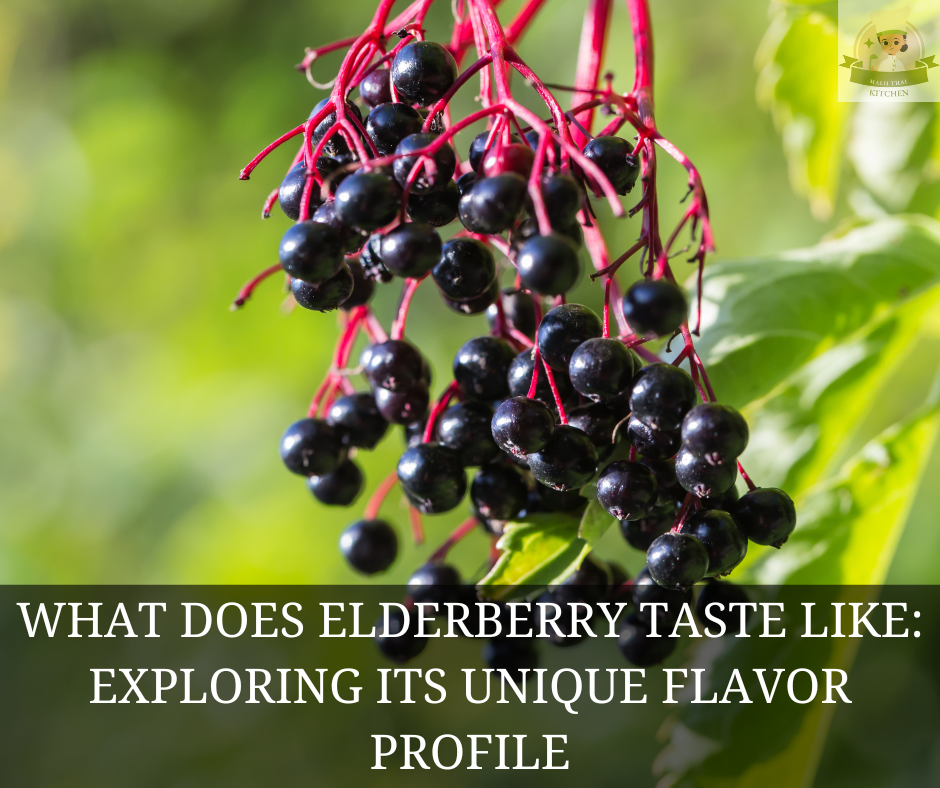The enigmatic elderberry, a fruit often relegated to the realm of folklore and homeopathic remedies, harbors a flavor profile that consistently surprises. It is far more nuanced than its deep purple hue might suggest. Forget the saccharine sweetness of common berries; the elderberry experience is a journey across the palate, a dance of tartness, earthiness, and an almost indescribable floral whisper. This exploration unveils the secrets held within these tiny orbs.
A Symphony of Flavors: Deconstructing the Elderberry Taste
The initial encounter with an elderberry often elicits a puckering sensation, a testament to its inherent tartness. This isn’t the simple sourness of a lemon, but a more complex, almost tannic quality reminiscent of certain red wines. The tartness is a foundational element, providing a counterpoint to the other flavors waiting to emerge. The uninitiated may initially recoil, but perseverance reveals the intricate layers beneath. It is an acquired taste for those accustomed to the cloying sweetness of modern fruit cultivars.
Earthy undertones follow the initial tartness. They are not the overt earthiness of root vegetables, but a subtle grounding note, a connection to the soil from which the elderberry springs. This element adds depth and complexity, preventing the tartness from becoming overwhelming. Consider it akin to the mineral notes found in fine wines, adding character and intrigue.
Finally, a delicate floral aroma and taste emerges, a fleeting whisper that elevates the entire experience. This is the elderberry’s secret weapon, a subtle perfume that distinguishes it from its more pedestrian berry brethren. Think of honeysuckle or elderflower cordial, but far more restrained and integrated into the overall flavor profile. This floral characteristic is what truly sets elderberries apart, transforming a potentially sour experience into something memorable and unique.
The Impact of Ripeness: A Crucial Determinant
The stage of ripeness profoundly influences the elderberry’s flavor. Unripe elderberries are not just tart; they are outright bitter and potentially toxic due to the presence of cyanogenic glycosides. These compounds, while harmless in small, processed quantities, can cause gastrointestinal distress if consumed raw and in significant amounts. Therefore, proper identification and harvesting at peak ripeness are paramount. A fully ripe elderberry will be a deep, almost blackish-purple color and yield easily from the stem.
Overripe elderberries, on the other hand, lose some of their tartness and develop a slightly fermented, almost musky flavor. This can be desirable in certain applications, such as winemaking, but it detracts from the fresh, vibrant flavor that characterizes a perfectly ripe berry. The key is to find the sweet spot – a berry that is fully colored, slightly soft to the touch, and bursting with flavor.
Varietal Variations: A Spectrum of Sensations
Just as with grapes and apples, different elderberry varietals exhibit distinct flavor profiles. Some varieties are inherently sweeter, with a more pronounced floral aroma, while others lean towards the tart and earthy end of the spectrum. Factors such as soil composition, climate, and cultivation practices further influence the final flavor. The ‘Adams’ and ‘York’ varieties, for example, are known for their relatively mild flavor, while wild elderberries often possess a more intense and complex taste.
Exploring different varietals is a worthwhile endeavor for the adventurous palate. One might discover a preference for the subtle sweetness of a cultivated variety or the wild, untamed flavor of a foraged berry. The possibilities are as diverse as the landscapes in which elderberries thrive.
Preparation and Processing: Unlocking the Potential
Raw elderberries, as previously mentioned, are not recommended for consumption. Processing, typically through cooking or fermentation, is essential to neutralize the cyanogenic glycosides and unlock the berry’s full flavor potential. Heating the berries significantly reduces the presence of these compounds, rendering them safe for consumption. This also softens the berries, making them easier to process and extract their juice.
Furthermore, processing allows for the addition of other ingredients that complement the elderberry’s inherent flavors. Sugar, spices, and other fruits can be used to create a wide range of culinary delights, from jams and jellies to syrups and wines. The tartness of the elderberry provides a natural counterpoint to sweetness, creating a balanced and harmonious flavor profile.
Culinary Applications: A Versatile Ingredient
Elderberries are incredibly versatile in the kitchen. Their unique flavor lends itself well to both sweet and savory applications. Elderberry jam and jelly are classic preparations, showcasing the fruit’s tartness and floral aroma. Elderberry syrup is a popular ingredient in cocktails and mocktails, adding a complex and intriguing note to beverages. Elderberry wine is a traditional beverage, known for its rich color and distinctive flavor.
Beyond these traditional uses, elderberries can also be incorporated into more adventurous culinary creations. Elderberry sauce can be used to complement game meats, providing a tangy and fruity counterpoint to their richness. Elderberry chutney can be served alongside cheese, adding a touch of sweetness and acidity. The possibilities are limited only by one’s imagination.
Beyond the Palate: The Elderberry Experience
The elderberry experience transcends mere taste. It is a sensory journey that engages all the senses, from the deep purple color of the berries to the earthy aroma that fills the air during processing. It is a connection to nature, a reminder of the bounty of the earth. It is a testament to the power of flavor to evoke memories and emotions. The elderberry, in its unassuming way, offers a profound and unforgettable experience.







Leave a Comment